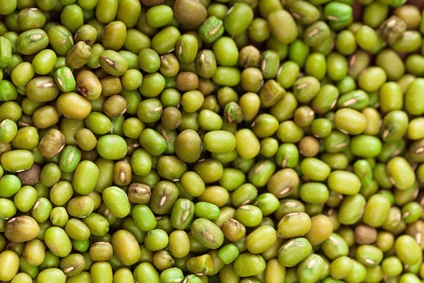Soybean acres experience catastrophic drop, lowest level in six decades
by August 13, 2019 4:33 pm 1,621 views

Dwight Eisenhower was president of the United States the last time so few farm acres were dedicated to soybeans in Arkansas.
Fueled by an ongoing trade war with China and battered by never ending rains, Arkansas farmers are projected to harvest 2.65 million acres this year, down 590,000 acres from 2018, according to the National Agricultural Statistics Service. The June NASS report had Arkansas’ harvested acreage at 2.95 million. Last year, Arkansas farmers harvested 3.24 million acres of soybeans.
It is the lowest number of soybean acres in the Natural State since 1960, NASS reported. Soybeans are the top crop in Arkansas.
“The standout stat in this is soybean acres,” Scott Stiles, extension economist for the University of Arkansas System Division of Agriculture said. “If my eyes don’t deceive me, that would be the lowest soybean harvested acreage since 1960 – which clocked in at 2.44 million acres.”
The report showed that cotton acres have increased, while the soybean crop has plunged.
“NASS conducted its survey for the June Acreage report around June 1,” he said. “At that time, Arkansas’ cotton acreage was estimated at 91% planted. Soybeans were estimated to be just 54% planted, versus the five-year average of 79%.”
Jeremy Ross, extension soybean agronomist for the Division of Agriculture, said he was surprised at the new NASS number. He thought soybean acres might be slightly below 3 million acres, but not 300,000 acres from the previous estimate.
Ross said he saw farmers planting beans during the first week of August as he drove across the state. Even with fewer acres, soybean yields could be better than expected.
“The bigger surprise is the state average yield at 51 bushels per acre,” Ross said, adding that he was expecting the state average yield to be somewhere in the mid 40s. “Depending on the weather conditions for the remainder of the season, we could have some good yields, but over half of your soybean crop was planted after the first of June. Compared to the 2018 planted acreage and the five-year average planted acreage, the first of June we were behind 25% and 34%, respectively. Previous research indicates that a soybean crop planted the first of June has already lost between 7-13% of its maximum yield due to delayed planting.”
Stiles said that the 610,000-acre figure for 2019 would be the fourth year of increasing cotton acres, and the highest since 2011 — a substantial leap over the 480,000 acres harvested last year. By comparison, the Boll Weevil Eradication Program showed 587,868 cotton acres enrolled in Arkansas as of July 30.
“Cotton picked up some acres as corn planting was delayed further and further,” Stiles said.
Jarrod Hardke, extension rice agronomist for the Division of Agriculture, said total rice acres in the NASS report were very close to expectations. Like Stiles, he expects to see a slight rise in future reports.
“We also expected a record number of rice prevented planting acres by a wide margin, but the number there even exceeded those expectations with a whopping 510,491 rice acres listed as prevented planting,” Hardke said. “The previous prevented planting record was in 2013 with 302,684 rice acres. The final harvested Arkansas rice acres were 1.07 million that year.”
At 750,000, corn harvested acreage would be the highest since 2013. Corn was at 645,000 acres in 2018. The June acreage report put harvested acreage at 780,000 and the March planting intention report put corn at 810,000 acres.
Jason Kelley, extension wheat and feed grains agronomist for the Division of Agriculture, said there were “no real big surprises” on corn compared to earlier reports. The 780,000 acres is a slight reduction from an earlier report, and the 180 bushels per acre state average yield. It would be on par with the seven-year state average yield, he said.
“As future reports come out, they will likely provide a better picture on yields,” Kelley added.
There was no change in the long or medium grain rice numbers from the June acreage report, which put rice at 1.27 million acres, versus 1.42 million acres in 2018. Of that total, 1.125 million acres are long grain. Medium occupies 150,000 acres.
